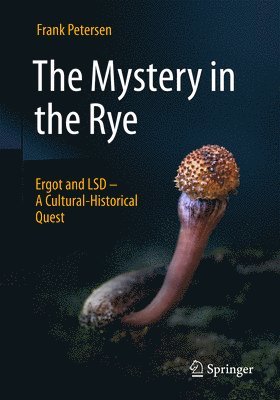Kommande

789:-
There are countless reports on microorganisms and their special abilities. The saga of the ergot fungus is perhaps the most unusual of them all. The unique history of this plant pathogenic microbe, which began with its infection of grasses, is told through a broad storyline that stretches from the early medical writings of Mesopotamia, Greece, and China, to the industrial and academic laboratories of pharmaceutical research in the 21st century.... Among cultivated grasses, the ergot fungus mainly infests rye. Its overwintering structure, the black-purple ergot kernel, grows out of the ears of the grain. The highly active substances it contains caused mass poisonings in Europe over a period of 1,000 years, in the course of which the victims suffered from terrible symptoms of illness. Only in the 17th century, doctors recognized ergot as the corpus delicti for the regularly recurring waves of mass poisoning. The development of drugs from pure ergot compounds is one of the fascinating contributions of pharmaceutical natural product and medicinal chemistry and was of great importance for the modernization of medicine. A straight line can be drawn from this research to the synthesis of LSD, whose accidentally observed psychotropic effect revealed the chemical basis of the psyche. In combination with other centrally active substances, the LSD studies opened the therapeutic research field of psychopharmacology. The ergot fungus stands for legendary advances in pharmaceutical science and human therapy. At the same time, the people who investigated this unique microorganism scientifically, for a wide variety of reasons, became part of its cultural history. Throughout the centuries, they have kept the wheels turning - an innovative power which is still effective today.
- Format: Inbunden
- ISBN: 9783662698143
- Språk: Engelska
- Antal sidor: 229
- Utgivningsdatum: 2025-05-11
- Förlag: Springer-Verlag Berlin and Heidelberg GmbH & Co. K

